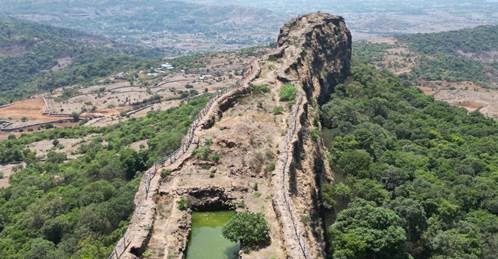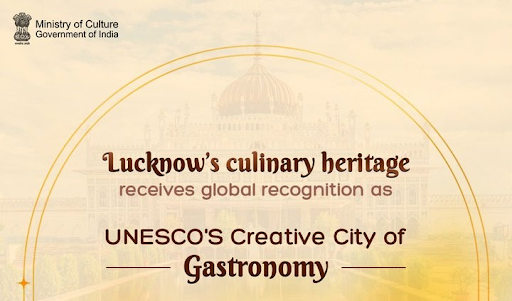Description

Disclaimer: Copyright infringement not intended.
Context
India has officially nominated the "Maratha Military Landscapes" for inclusion in the UNESCO World Heritage List for the year 2024-25.
Details
- This nomination encompasses a network of twelve forts spread across Maharashtra and Tamil Nadu, showcasing the strategic military prowess of the Maratha rule.
- The forts, developed between the 17th and 19th centuries, stand as a testament to an extraordinary fortification and military system envisioned by the Maratha rulers.
List of Nominated Forts
- Salher
- Shivneri
- Lohagad
- Khanderi
- Raigad
- Rajgad
- Pratapgad
- Suvarnadurg
- Panhala
- Vijaydurg
- Sindhudurg
- Gingee (in Tamil Nadu)
Historical Significance
- The Maratha Military Landscapes represent the evolution of military ideology from the 17th century under the reign of Shivaji Maharaj, continuing through subsequent rules until the Peshwa rule in 1818 CE.
- The forts are strategically located in diverse geographical regions, including Sahyadri mountain ranges, Konkan Coast, Deccan Plateau, and Eastern Ghats.
Cultural Criteria for Nomination
The nomination falls under the cultural category and satisfies the following criteria for inclusion in the World Heritage List:
- Criterion (iii): Bearing a unique testimony to a cultural tradition or civilization.
- Criterion (iv): Being an outstanding example of a building, architectural or technological ensemble, or landscape illustrating significant stages in human history.
- Criterion (vi): Being directly or tangibly associated with events, living traditions, ideas, beliefs, and works of outstanding universal significance.

Diversity of Forts
- The twelve forts exhibit diversity in hierarchies, scales, and typological features.
- They include hill forts like Shivneri, Lohagad, Raigad, Rajgad, and Gingee; hill-forest fort like Pratapgad; hill-plateau fort like Panhala; coastal fort like Vijaydurg, and island forts like Khanderi, Suvarnadurg, and Sindhudurg.
Protection and Conservation
- Archaeological Survey of India (ASI): Eight forts, including Shivneri, Lohgad, Raigad, Suvarnadurg, Panhala, Vijaydurg, Sindhudurg, and Gingee, are protected by ASI.
- Directorate of Archaeology and Museums, Govt. of Maharashtra: Salher fort, Rajgad, Khanderi fort, and Pratapgarh are under the protection of this Directorate.
Current World Heritage Sites in India
- India currently has 42 World Heritage sites, including 34 cultural sites, 7 natural sites, and 1 mixed site.
- Maharashtra hosts six World Heritage Sites, including Ajanta Caves, Ellora Caves, Elephanta Caves, Chhatrapati Shivaji Maharaj Terminus, Victorian Gothic and Art Deco Ensembles of Mumbai, and the Western Ghats.
Tentative List Inclusion
- The Maratha Military Landscapes were included in the Tentative List of World Heritage sites in 2021, marking the sixth cultural property nominated for inclusion in the World Heritage List from Maharashtra.

Conclusion
India's nomination of the Maratha Military Landscapes for the UNESCO World Heritage List reflects the rich historical and cultural significance of these forts. If inscribed, these forts will join the prestigious list of World Heritage Sites, further contributing to the recognition and preservation of India's diverse cultural heritage.
MUST READ ARTICLES:
https://pib.gov.in/PressReleasePage.aspx?PRID=2000461
https://www.iasgyan.in/daily-current-affairs/sacred-ensembles-of-hoysalas
https://www.iasgyan.in/daily-current-affairs/santiniketan
|
PRACTICE QUESTION
Q. Discuss the significance of India's nomination of the "Maratha Military Landscapes" for inclusion in the UNESCO World Heritage List for the year 2024-25. (250 Words)
|















